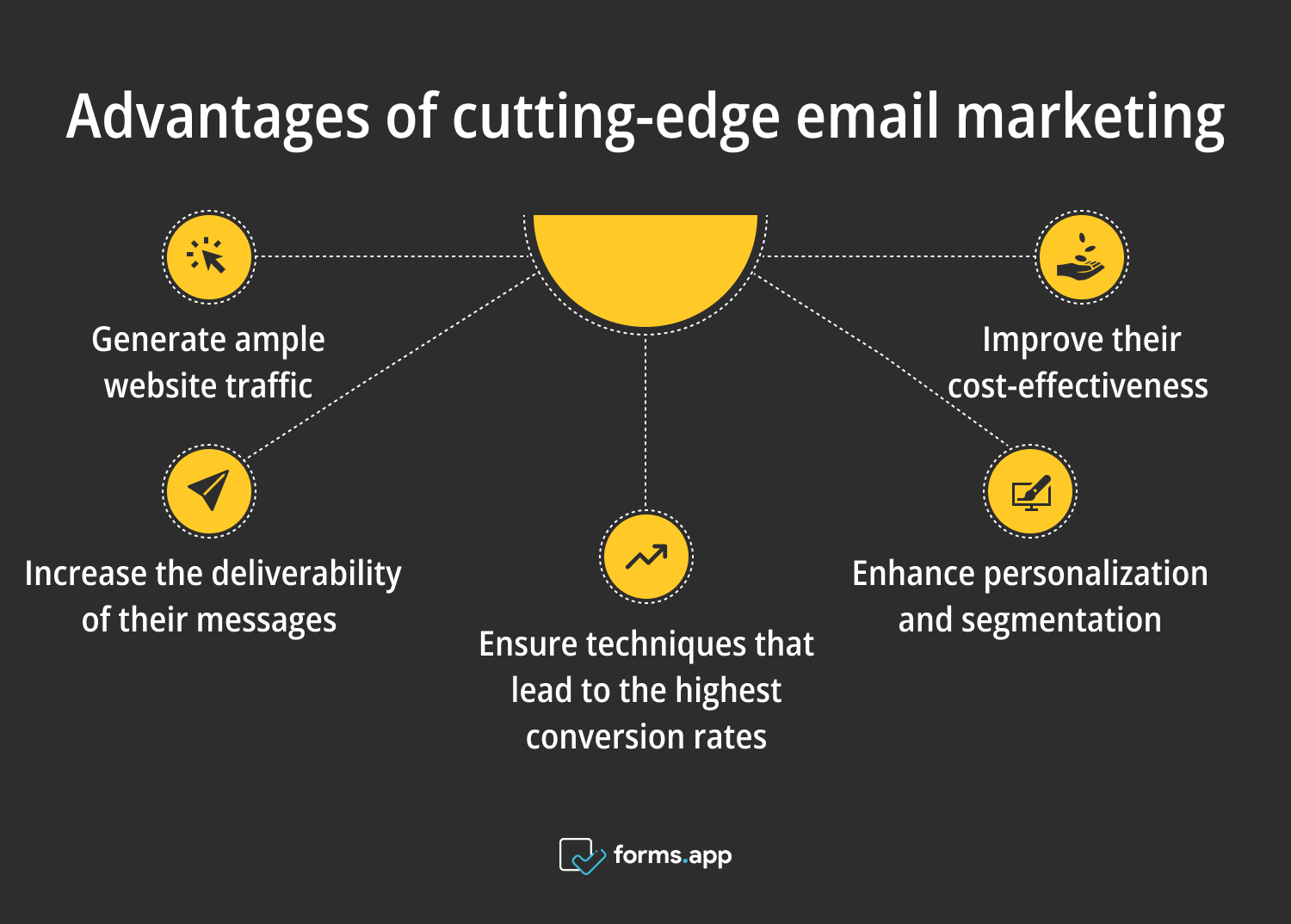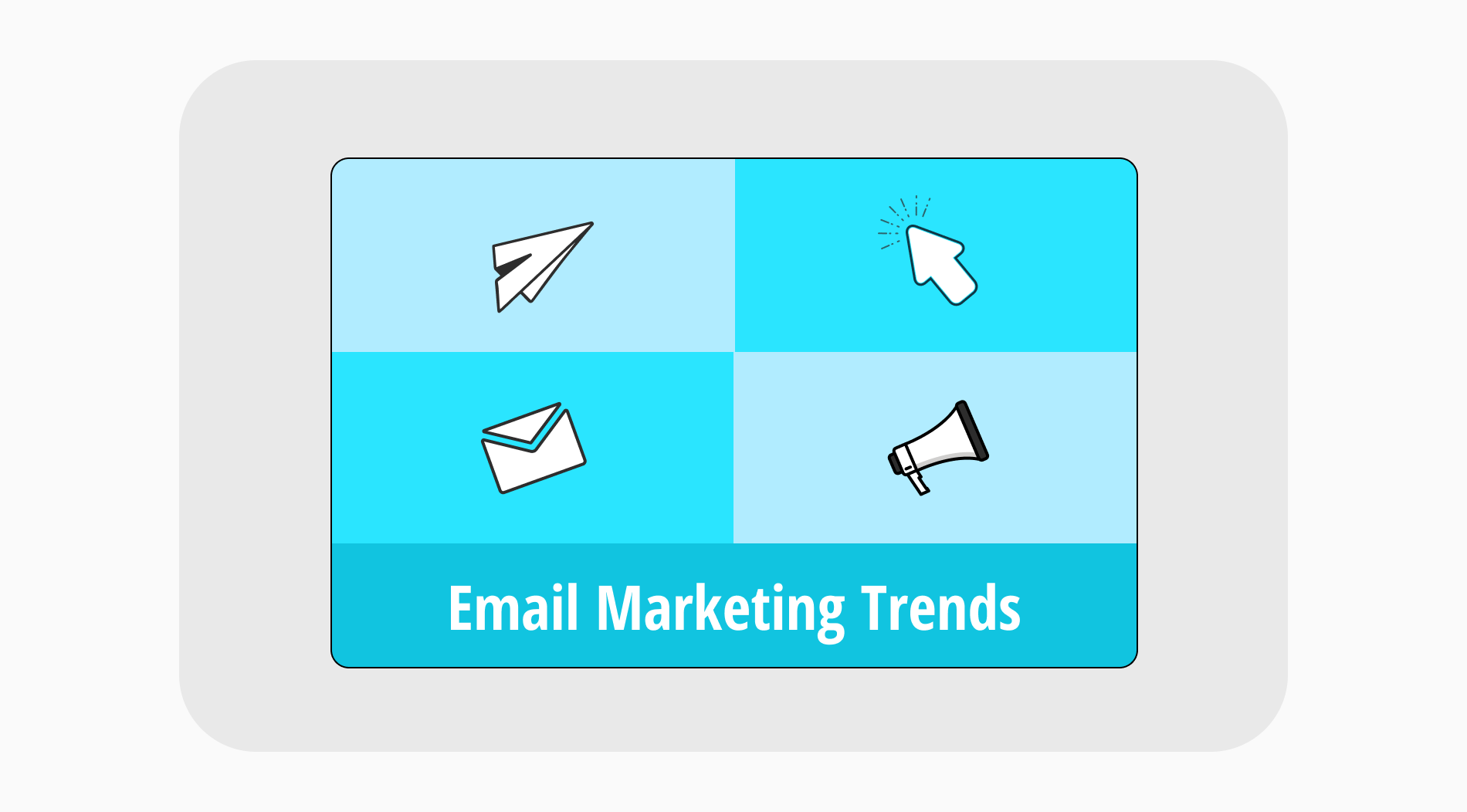Email marketing may not be new, but it remains one of the most effective ways to reach target audience members with a personalized message. When done right, email marketing can raise your brand awareness, increase website traffic, and foster greater customer loyalty. But all of those benefits hinge on recognizing a simple reality: Email marketing is changing all the time.
These changes involve everything from new email marketing technologies to shifts in the way people consume their inbox content. The most effective marketers know how to pivot and adapt, ensuring their strategy is attuned to the times.
How email marketing evolves
There are several reasons why email marketing has evolved over time. For one thing, consumer behaviors change. For example, some of the most significant email marketing trends of 2025 revolve around consumers’ increased concerns over data privacy and their rising expectations for personalized content.
Changes to the technological ecosystem are also important to consider. Email automation tools make it easier than ever for marketers to not only streamline their operations but also optimize the timing of each email they send. Advances in email marketing templates have introduced new ways to deliver interactive content.
These are just a couple of examples of how email marketing trends are fluid and constantly changing. To remain competitive and retain the attention of their email subscribers, marketers need to be aware of these trends and adapt their strategies accordingly. In this post, we’ll explain how.
The benefits of cutting-edge email marketing
Marketers can anticipate a number of benefits from remaining up-to-date with the latest email marketing trends. By fully understanding consumer trends and by taking advantage of cutting-edge technology, email marketers can:

Pros of using cutting-edge email marketing
- Generate ample website traffic, including traffic from qualified and relevant leads.
- Increase the deliverability of their messages, minimizing the number of emails that end up in spam folders.
- Ensure techniques that lead to the highest conversion rates, ultimately improving the bottom line.
- Enhance personalization and segmentation, leading to a more positive and frictionless consumer experience.
- Improve their cost-effectiveness, ensuring the resources they put behind their email marketing actually yield results.
Essential email marketing trends for 2025
The email marketing landscape is ever-changing, but a few trends stand out as especially consequential. Here are some of the main email marketing trends to know about heading into the back half of 2025:
1. Increased concerns over privacy
Over the past few years, few trends have shaped digital marketing quite like the increased concern for consumer privacy. Simply put, today’s Internet users care very much about how their data is collected, managed, and used.
For email marketers, this means it’s important to provide privacy notifications any time you harvest user data. And it means offering plenty of options for subscribers to opt-out or unsubscribe as needed.
2. Newsletters en vogue
Email newsletters have become nearly as popular as blogs, and provide a great way to provide both short-form updates and long-form writing to interested subscribers.
Thanks to platforms like Substack, many of the most revered writers in the world now share their work via email newsletter. This means there’s a bigger audience than ever, but also that expectations for quality are sky-high. For email marketers, it’s important to take the popularity of the email newsletter seriously, which means taking the time for regular updates that are carefully written and thoughtfully designed.
3. Personalization
Personalization in email marketing is nothing new, necessarily. Email recipients have long expected the content they receive to be relevant to their interests and uniquely suited to the subject matter in which they have previously engaged.
In 2025, email marketers need to be as cognizant of this as ever and to use data to ensure that the content they send out is carefully based on consumer preferences, demographics, and past behaviors. A one-size-fits-all approach to email marketing simply won’t work any longer, as personalized cold emails are key to ensuring a frictionless and appealing user experience.
4. Interactivity
In the earliest days of email, messages were static, designed simply to convey information. That’s not the case today, with email designs more dynamic than ever. Today, marketers can engage their recipients in a range of interactive elements, from polls to quizzes to embedded video content.
Such content is essential for marketers who wish to make their email messages feel more like conversations or part of an ongoing dialogue, encouraging consumers to actively engage with the brand in question.
5. Mobile-first design
This is another trend that isn’t new, necessarily, but has grown all the more vital. Simply put, a majority of today’s online shoppers access the Internet from their mobile devices. That’s true not just of websites, but email, too. Statistically speaking, it’s fair to say that an overwhelming majority of your email subscribers will be mobile-first as opposed to desktop-oriented.
This makes it essential for all your marketing emails to be designed with mobile-first templates, making it easy and accessible for your subscribers to consume your content, no matter the screen size or device type. Specifically:
- Ensure your email content loads quickly.
- Make sure the full message can be read without a lot of pinching, zooming, or scrolling.
- Ensure any hyperlinks are easy to see and click, even from a smartphone.
6. Automation
Automation is another one of 2025’s most significant email marketing trends. Using cutting-edge technology, often powered by AI and machine learning, today’s marketers can automate a number of mundane and repetitive tasks, streamlining their efforts while optimizing results.
Some things email marketers can do through automation include:
- Creating email segments based on demographics, user behavior, or other factors.
- Automatically sending emails at the most optimal time for open rates.
- Sorting recipients into different lists or segments based on their interactions with a particular email.
Simply put, automation is essential for email marketers who wish to work smarter and more efficiently and to more ably manage the demands of complex, large-scale campaigns.
7. AI
Speaking of AI, this is probably the most noteworthy trend across the entire digital ecosystem… and email marketing is hardly exempt.
There are countless ways in which email marketers can use AI to their advantage. Beyond segmentation and send optimization, AI can also be a useful tool for generating content: Use it to brainstorm topics, provide simple outlines, and even create succinct subject headings.
Remember that having human involvement is always important, ensuring a natural voice and a high level of creativity. With that said, AI can be a useful tool for harnessing and guiding human efforts.
8. Segmentation
Segmentation has come up a couple of times now; but what does it mean, exactly, and why is it such a major focus in 2025?
In a nutshell, segmentation is the process of dividing your email list into smaller, more targeted segments based on specific criteria such as demographics, behavior, preferences, or engagement level.
Segmentation lets marketers send more relevant and personalized content to different groups of subscribers, improving the effectiveness of email campaigns and driving better results. It’s an increasingly big focus both due to the increased interest in personalized content, and because of the more advanced forms of segmentation that AI allows.
9. User-generated content
Email marketing requires a lot of good content, but that doesn’t mean marketers have to come up with all the content themselves. As a marketer, you can explore user-generated content platforms to organize and share UGCs for your business better.
Sharing user-generated content, from testimonials and reviews to brand-related images on social media, can be a great way to liven up content, convey authenticity, and elicit trust in your brand.
10. Accessibility
When it comes to accessibility, it’s easy to think just in terms of physical mobility. For example, a retail store might need to install a wheelchair ramp to ensure their wares are accessible to all clientele.
Accessibility also pertains to email marketing, specifically to recipients who may have visual impairments. Offering audio content, providing alt-text for images, and even offering a plain text version can all be helpful ways to be inclusive.
11. Dark mode
An oft-overlooked email marketing trend is the emergence of dark mode, which provides a more visually soothing option for reading emails after hours or in a dimly lit room. Dark mode is a boon for email recipients, but it does present some challenges for marketers. Specifically, email marketers must:
- Use color schemes that are dark-mode compatible.
- Test emails in dark mode, ensuring they are legible and aesthetically pleasing.
- Using responsive design.
- Using high-contrast images.
- Avoiding pure black text.
12. Email deliverability
Today’s spam filters are as sensitive as ever, and it’s vital for marketers to avoid setting them off. Some general tips include:
- Always working from a high-quality email list and purging any dud accounts.
- Using double opt-ins allows subscribers to confirm their intentions before signing up.
- Maintaining a good sender reputation, carefully monitoring metrics like spam reporting and bounce rate.
- Sending content that’s engaging and relevant.
13. Predictive analysis
Predictive analysis is all about using historical data, statistical algorithms, and machine learning to forecast future email marketing performance and outcomes.
Today’s marketers can analyze past campaign data, subscriber behavior, and other relevant factors, which in turn can help them make data-driven decisions to optimize email campaigns and improve results.
Predictive analysis is an increasingly major focus for email marketers who wish to maintain their competitive edge.
14. Transactional emails
Another trend to keep in mind: Marketers are looking beyond sales announcements and monthly newsletters, realizing that there is a lot of brand-building potential even in transactional messages.
For example, order and shipping confirmations can be excellent places to foster brand loyalty, providing links to service and support pages, inviting customers to contact you with any questions, and even directing them to AI-powered chatbots that can help them track their orders.
15. Recommendations
Marketing emails can also provide excellent opportunities for upselling or cross-selling related products. Consider using marketing emails to provide customers with personalized product recommendations based on past purchase histories, browsing/shopping histories, or general demographic insights. Product recommendations are a key email marketing trend for 2025 and will likely remain important for the foreseeable future.
16. Advanced analytics
Successful email marketing has always been grounded in data and analytics, including basic metrics like email open rates.
More advanced analytics are available, too, and provide marketers with further tools for understanding their campaigns and driving results. A few examples of advanced analytics to consider:
- Email heatmaps
- Customer Lifetime Value (CLV) analysis
- Email attribution modeling
- Email deliverability modeling
Additional tips for a successful email marketing agency
To ensure ongoing success, email marketers benefit from staying current with the latest trends. However, some practical and legal concerns can also make any email marketing agency more efficient and effective.
One recommendation is to register as a Limited Liability Company (LLC). Doing so is an important way to minimize personal liabilities, which means less time spent worrying about litigation. LLC formation also provides a lot of tax and administrative flexibility.
There are a few basic steps required for LLC formation, including:
- Choosing a name that isn’t already taken by an existing LLC.
- Appointing someone to be a Registered Agent. (This will generally be a third party, though some states do allow being your own Registered Agent.)
- Filing Articles of Organization and paying a small registration fee.
- Creating an Operating Agreement to guide how the LLC is run.
Conclusion
Email marketing is fluid and ever-shifting. Thanks to changes in technology and variations in consumer preferences, email marketing trends are always in motion. The most successful marketers know how to stay on top of these trends and harness them to ensure more efficient campaigns. This requires attentiveness to major email marketing trends that include everything from personalized content to list segmentation, from advanced analytics to the rise of Substack.
Keep abreast of what’s happening in the email marketing world and incorporate these trends when possible. The ability to pivot and adapt is often what makes the difference between so-so campaigns and truly great ones.
Sena is a content writer at forms.app. She likes to read and write articles on different topics. Sena also likes to learn about different cultures and travel. She likes to study and learn different languages. Her specialty is linguistics, surveys, survey questions, and sampling methods.



